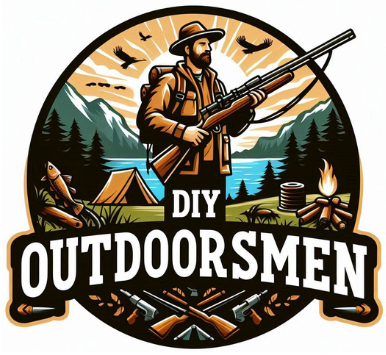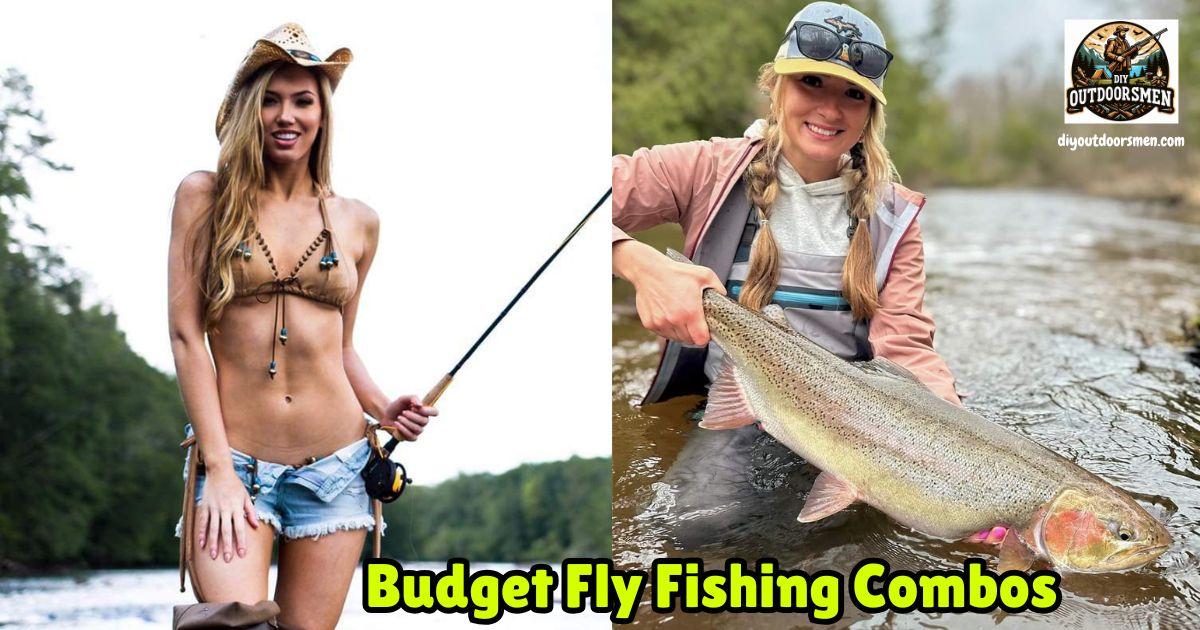Contents
- 1 Why Budget-Friendly Fly Rod and Reel Combos Are a Great Choice for Beginners
- 2 Features That Matter Most in a Starter Fly Rod and Reel Combo
- 3 I’ve Had Good Experiences with These Budget Fly Rod and Reel Starter Combos
- 4 What to Watch Out For When Choosing Your First Fly Rod and Reel Combo
- 5 Questions Beginners Often Ask About Fly Fishing Combos
- 6 Getting the Most Out of Your First Rod and Reel Combo
- 7 Situations Where a Budget Combo Shines
If you’re interested in fly fishing but don’t know where to start, picking out your first fly rod and reel combo can feel overwhelming. There are so many choices, styles, and brands on the market that it’s easy to get lost in the details, especially when you want quality without breaking the bank.
QUICK LOOK: Features to Consider in a Fly Rod and Reel Combo
- Line Weight: A 5 or 6 weight combo covers a lot of fishing situations, from trout in streams to light bass in small lakes. Lighter combos like 3-weight are better for tiny streams and panfish, while heavier combos (8 weight or above) are suited for bigger fish or saltwater.
- Rod Action: Rods can be fast, medium, or slow action. Fast-action rods give you longer casts and more power, which is nice in windy or open areas. Medium or slower actions are easier for learning timing and provide a smoother feel for short to medium casts.
- Length: Nine-foot rods are a good all-arounder. Shorter rods work well in tight spaces like brushy streams, while longer rods can help with mending line on bigger rivers.
- Reel Size and Drag: The reel should match the rod’s line weight. For most freshwater starter combos, a basic disc drag system provides enough stopping power without making things complicated. Simpler click pawl drag reels are also easy for beginners and super reliable.
- Components and Build: I look for aluminum reels, graphite or composite rods, and solid reel seats. Cheap plastic reel housings or guides can let you down after only a season or two.
When I started fly fishing, I remember wanting a setup that was reliable, easy to use, and affordable. The good news is that many brands now offer beginner fly rod and reel combos that check all those boxes.
Why Budget-Friendly Fly Rod and Reel Combos Are a Great Choice for Beginners
Getting into fly fishing can be pricey, especially if you try to buy rods, reels, and accessories separately. Combo kits simplify things and usually save money because the components are matched for balance and performance. Brands often use technology and materials from their higher-end products in these entry-level kits, so you get much better gear than you might expect at this price point.
These combos often come with everything you need to start, so you can focus on fishing instead of sorting out gear compatibility. From my experience, starter kits take the pressure off. I knew that the rod, reel, and line would work together right out of the box.
This means less frustration for new anglers and more time learning the fun parts of casting and catching fish. Plus, most modern kits are backed up by loads of online tutorials, reviews, and resources, which is especially helpful when you’re just starting.
Features That Matter Most in a Starter Fly Rod and Reel Combo
Not all fly rod and reel starter kits are created equal, so you want to make sure you’re getting gear that’s actually suited for your purposes. I look at these key features every time I recommend a combo for a friend or beginner angler:
- Line Weight: A 5 or 6 weight combo covers a lot of fishing situations, from trout in streams to light bass in small lakes. Lighter combos like 3-weight are better for tiny streams and panfish, while heavier combos (8 weight or above) are suited for bigger fish or saltwater.
- Rod Action: Rods can be fast, medium, or slow action. Fast-action rods give you longer casts and more power, which is nice in windy or open areas. Medium or slower actions are easier for learning timing and provide a smoother feel for short to medium casts.
- Length: Nine-foot rods are a good all-arounder. Shorter rods work well in tight spaces like brushy streams, while longer rods can help with mending line on bigger rivers.
- Reel Size and Drag: The reel should match the rod’s line weight. For most freshwater starter combos, a basic disc drag system provides enough stopping power without making things complicated. Simpler click pawl drag reels are also easy for beginners and super reliable.
- Components and Build: I look for aluminum reels, graphite or composite rods, and solid reel seats. Cheap plastic reel housings or guides can let you down after only a season or two.
These key areas are really what set apart a fly rod and reel kit that will last from something that’ll leave you frustrated. Keep your focus on these parts, and you’ll set yourself up for a much smoother fishing learning curve.
I’ve Had Good Experiences with These Budget Fly Rod and Reel Starter Combos
When I talk with friends who want to try fly fishing, I often suggest a handful of proven, budget-friendly starter kits. These combos all come from brands with solid reputations and include the essential pieces you need to get started. Here are some options you’ll probably like:

Sougayilang Fly Fishing Combo
This kit offers a 4-piece, medium-action graphite rod with an aluminum alloy reel. The setup’s smooth for casting and robust enough for basic trout or panfish outings. The included rod bag makes it easy to take with you, and it usually comes with a floating line, backing, and a leader.
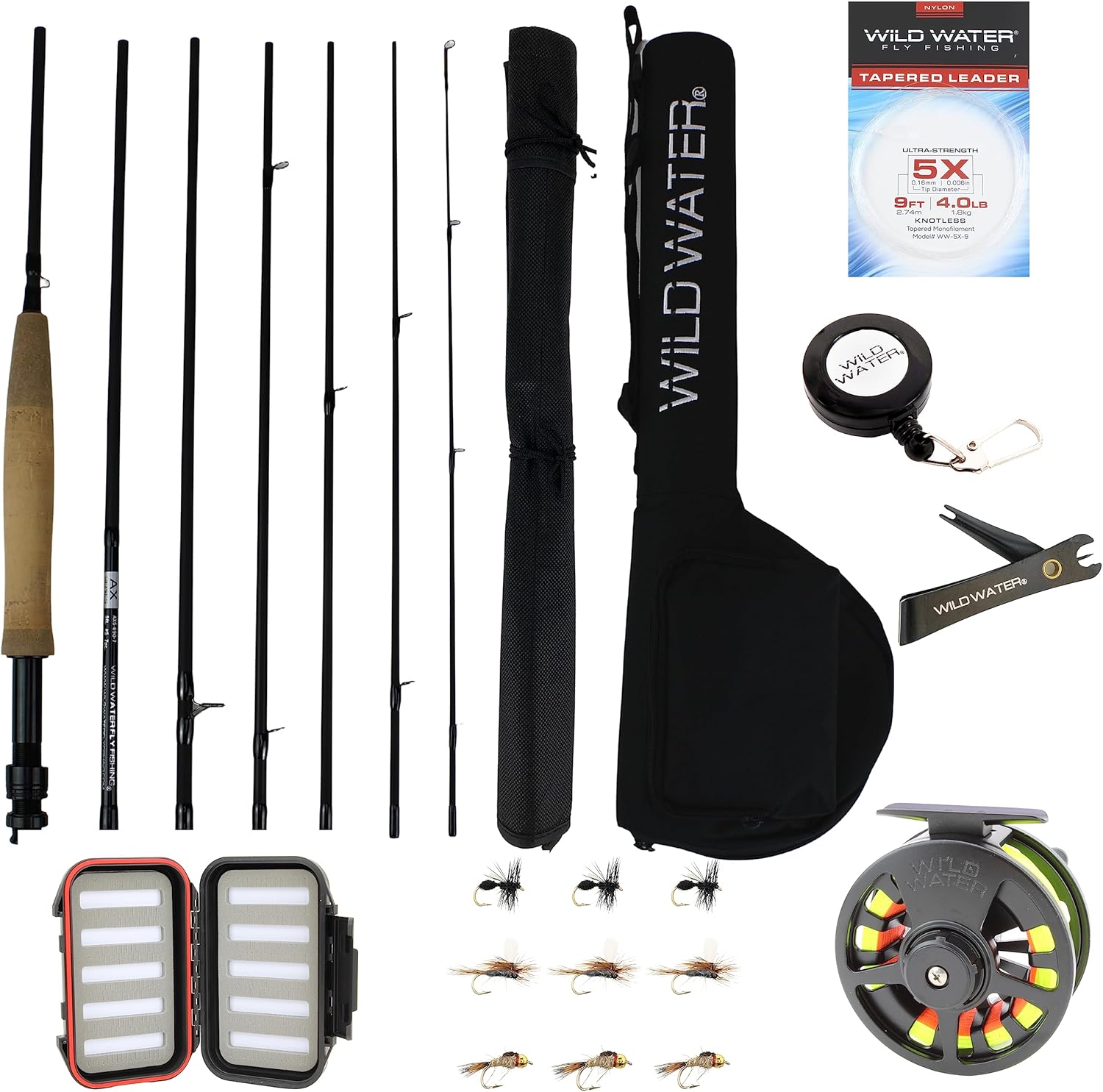
Wild Water 9 ft 7-Piece Fly Fishing Starter Kit
With a 7-section graphite rod, ABS reel, floating line, backing, and leader, this set is a bargain. The rod casts surprisingly well and is forgiving enough for new anglers. The carry bag is compact and convenient, making it a favorite for travel or backpacking.
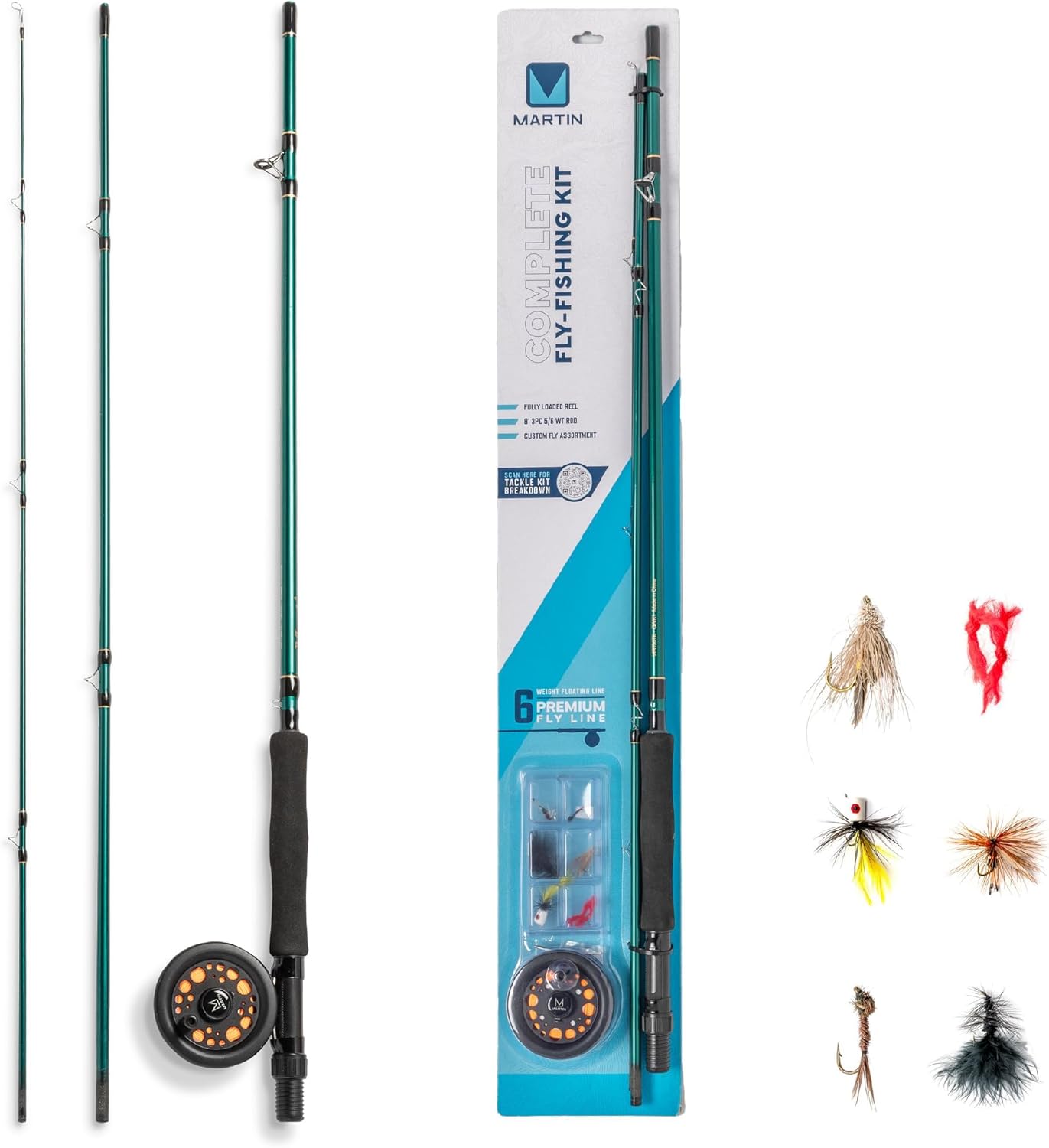
Martin Complete Fly Fishing Kit
This kit has a fiberglass rod for extra durability and a basic aluminum reel, both pre-spooled with line and leader. The fiberglass construction is a bit heavier, but it’s tough for beginners who might bump their rod against rocks or trees.

Aventik Extreme Fly Fishing Combo Kit
This combo levels up slightly with a carbon fiber rod and a precise CNC-machined reel. It often comes with flies, leaders, and accessories in a neat travel case, which is great for anglers on the go who want solid casting performance in a kit that is portable and organized.

Gonex Fly Fishing Rod and Reel Combo Starter Kit
Lightweight and good for ambidextrous use, this 4-piece rod packs down small without sacrificing casting ability. The medium-fast action helps new anglers with timing and accuracy. Often includes all the standard extras, like line, leader, and a small selection of flies.
Each of these fly rod and reel kits gives you plenty of performance for the price and is available from well-reviewed retailers. The selection you make will come down to your fishing style, target species, and preferred method of transport.
What to Watch Out For When Choosing Your First Fly Rod and Reel Combo
Not all fly rod and reel kit components will be perfect, even with big-name brands. I’ve learned that the guides (the rings the line passes through), reel seat (where the reel attaches to the rod), and basic connections are often the first places starter kits wear out. When you’re comparing options, reading reviews from other anglers helps spot any recurring quality complaints, like loose reel seats or guides coming unwrapped.
- Durability: Choose rods with sturdy guides and reel seats. Flimsy plastic or poorly glued components generally don’t hold up to actual fishing conditions.
- Warranty: Many respected brands offer basic warranties, even on entry-level kits. This gives some peace of mind for new buyers.
- Ease of Use: Make sure the combo includes almost everything you need: rod, reel, line, and leader. Some even add a small fly assortment or tippet to get you truly ready to fish.
- Portability: If I’m hiking into a river or traveling by car, a four-piece rod that breaks down fits much more easily in a backpack or suitcase.
Double check that you’re not just looking at price—see what others say about long-term usability, and if anyone’s had trouble with recurring issues. Quality control can make or break your first experience, so it’s worth asking around and looking up additional reviews.
Questions Beginners Often Ask About Fly Fishing Combos

It’s normal to have questions before investing in a fly fishing setup, especially if you’ve never tried it before. Here are answers to a few things I hear all the time from beginners:
Is a combo better for beginners than buying separate items?
Starter combos make it so much easier to get going, since everything is matched for balance and performance. It saves money in most cases, too, and you get to jump straight in without worrying about gear compatibility.
What fish can I target with a kit like these?
Most 5 or 6 weight combos will handle trout, small bass, panfish, and similar freshwater fish. If you want to fish for bigger bass or saltwater species, you’ll need a heavier rod and reel, like an 8-weight or above.
Can I upgrade individual components later?
Absolutely. Once you get more comfortable and want to take your gear up a notch, you can buy separate rods, reels, or lines. Most reels and rods use universal fittings in standard sizes, which lets you mix and match as your skills grow.
How do I know if a kit is high quality?
Reviews from real anglers matter a lot. Look for feedback on durability, casting feel, and whether the rod and reel hold up after a season of use. Brands like Sougayilang, Leo, and Wakeman get mentioned often for being durable and affordable.
Should I buy extra flies or stick with the included ones?
It’s always helpful to have a few more fly patterns for your area. The ones provided are a nice start, but adding locally recommended flies can bump up your chances for a catch.
Getting the Most Out of Your First Rod and Reel Combo
Once you pick out your fly rod and reel kit, practice is where you’ll see real improvement. Head to a park, open field, or local waterway to get used to casting and handling your new gear. Mistakes are normal, and seeing progress from day one is what keeps things fun. Consistent practice, even for just 15 minutes a few times a week, improves muscle memory and casts quality quickly.
- Learn Casting Basics: Simple overhead casts and roll casts are all you need to catch plenty of fish as a beginner.
- Ask Local Anglers: Fly shops and local fishing groups are usually happy to share tips and demo casts with your new rod and reel. Don’t hesitate to ask people out on the water for advice.
- Read Up or Watch: Plenty of free resources are available on YouTube and angling websites. Check out online forums for tips about technique and local waters.
If something about the combo doesn’t feel right, don’t be afraid to experiment with new lines or leaders; even small tweaks can make the rod easier to cast or control. The goal is to find a setup that feels comfortable and catches fish where you like to go. Being flexible and willing to tinker a bit gives a huge boost to your skills as you gain experience.
Situations Where a Budget Combo Shines
Fly fishing doesn’t have to be an expensive hobby. With a good starter kit, I get a feeling of freedom because I’m not worried about damaging super expensive gear in rough conditions. Whether I’m backpacking into a lake, riding a kayak down a slow river, or sharing gear with friends and family, these combos get me fishing more and stressing less.
- Backpacking: Four-piece and telescoping rods are perfect for squeezing into small packs.
- Kayak Fishing: Lightweight, short-handle rods work great when I’m seated close to the water and want quick casts near brush or banks.
- Teaching or Loaning Out: Beginner rods can survive a little abuse from first timers and kids, making learning sessions stress-free. You won’t panic if a rod gets dinged up during lessons.
The right rod and reel combo isn’t the most expensive one you can afford; it’s the one that helps you get on the water and have fun learning with confidence. For anyone starting out or just wanting a backup to throw in the car, these budget-friendly combos are the way to go. With the right beginner kit, you’ll spend far more time enjoying the water and building your skills. Time to roll—tight lines and happy casting!
Most Recent Articles:
- 5 Budget-friendly Fly Rod And Reel Starter Combos
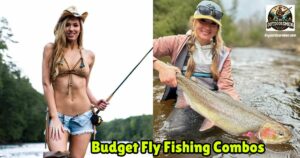
- 8 Crossbow Hunting Techniques And Tips

- Fly Fishing Gear For Beginners

- 6 Steps to Crossbow Hunting For Beginners

- 6 Key Features of Ultralight Telescopic Fishing Rods For Backpackers
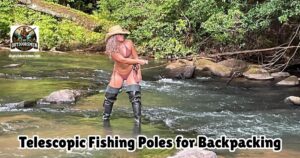
- Crossbows For Hunting

As always, stay safe, enjoy the journey, and please try to leave it cleaner than you found it. If you have any comments, questions, ideas, or suggestions, please leave them in the comment section below, and I’ll get back to you ASAP. You can follow us on YouTube: Man Art Creations for videos of our DIY Adventures.
P.S. Thanks so much for checking out our blog; we really appreciate it. Just so you know, we may receive a commission if you click on some of the links that appear on our site. This helps us keep our content free and up-to-date for everyone. We appreciate your support!
